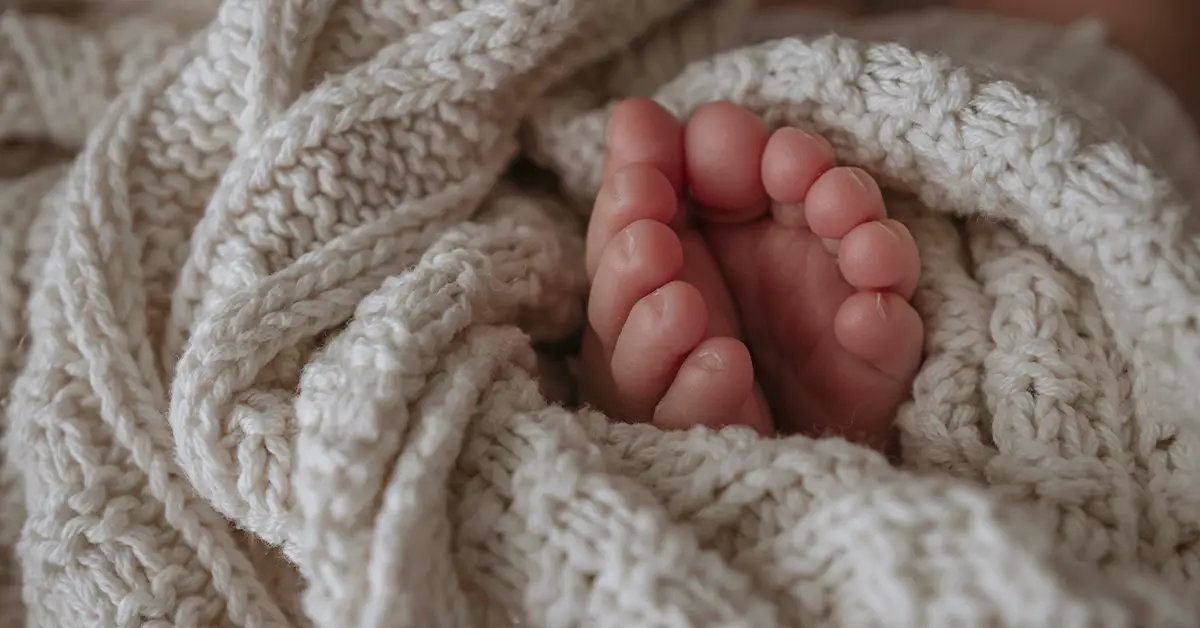In order to knit a blanket on straight needles you have to choose your yarn and needles, determine the size of your blanket, cast on stitches, knit the first row, bind off stitches, and finally, weave in ends.
What You Will Need To Knit A Blanket On Straight Needles?
To knit a blanket on straight needles, you will need the following:
- Yarn: Choose a yarn that is appropriate for the size needles you will be using and the desired texture and thickness of your blanket.
- Needles: Select straight needles in the appropriate size for your yarn.
- Scissors: You will need scissors to cut your yarn.
- Yarn needle: Use a yarn needle to weave in any loose ends of yarn.
- Stitch markers: These can be helpful to mark the beginning and end of each row, or to mark pattern repeats.
- Measuring tape: Use a measuring tape to check the size of your blanket as you work, and to measure your gauge.
- Optional: Border yarn: If you want to add a border to your blanket, you will need additional yarn in a contrasting color.
With these materials, you will have everything you need to knit a cozy and warm blanket on straight needles.
Planning Your Blanket Project
Planning your blanket project is an important step to ensure a successful outcome. Here are some things to consider when planning your blanket project:
- Yarn type: Choose a yarn that is appropriate for the size needles you will be using and the desired texture and thickness of your blanket. Keep in mind that some yarns are easier to work with than others, so choose a yarn that you are comfortable knitting with.
- Needle size: The size of your needles will depend on the thickness of your yarn and the desired texture of your blanket. You can find recommendations for needle sizes on the yarn label or in knitting patterns.
- Blanket size: Decide on the size of your blanket, taking into account the amount of yarn you have and the time you have available to knit. Remember that knitting a large blanket can be time-consuming, so choose a size that is appropriate for your skill level and available time.
- Pattern: Decide if you want to follow a pattern or create your own. If you are a beginner, a simple pattern with basic stitches may be the best choice. If you want to create your own pattern, sketch out a design and calculate the number of stitches needed.
- Gauge: Gauge is the number of stitches and rows per inch in your knitting. It is important to check your gauge before starting your blanket to ensure that it will be the correct size. You can use a gauge swatch to test your gauge before starting your project.
- Color: Choose the color or colors of your yarn. Consider the color scheme of the room where the blanket will be used, or choose colors that you love.
How to Cast on Stitches for Your Blanket
To cast on stitches for your blanket, follow these steps:
- Make a slip knot: Leave a tail of about 6 inches (15 cm) and make a slip knot at the end of your yarn.
- Hold the needle and slip knot: Hold one needle in your right hand and the slip knot in your left hand.
- Position your hands: Hold the needle in your right-hand parallel to the floor and the slip knot in your left hand.
- Place the yarn: Place the working yarn (the yarn attached to the ball) over your left thumb and the tail yarn (the end you left hanging) over your left index finger.
- Insert the needle: Insert the needle into the slip knot from left to right.
- Twist the needle: Twist the needle down and to the right, then up and to the left to create a loop around the needle.
- Tighten the loop: Hold the yarn tail and the working yarn with your left hand and pull them gently to tighten the loop around the needle.
- Repeat: Repeat steps 5-7 until you have the desired number of stitches on your needle.
- Position your stitches: Slide the stitches to the center of the needle, making sure they are not too tight or too loose.
- Continue knitting: You are now ready to start knitting the foundation row of your blanket.
How To Knit The First Few Rows
To knit the first few rows of your blanket, follow these steps:
- Hold the needles: Hold one needle in each hand with the cast-on stitches on the left needle.
- Make a knit stitch: Insert the right needle into the first stitch on the left needle from front to back.
- Wrap the yarn: Take the working yarn (the yarn attached to the ball) and wrap it counterclockwise around the right needle.
- Pull through: Use the right needle to pull the yarn through the first stitch, creating a new stitch on the right needle.
- Slide the stitch: Slide the stitch off the left needle and onto the right needle.
- Repeat: Repeat steps 2-5 for each stitch across the row.
- Turn the work: When you have finished the first row, turn the work around so the right needle is in your left hand and the left needle is in your right hand.
- Repeat: Repeat steps 2-7 for each row until you have completed the desired number of rows.
How To Create Different Stitch Patterns
Creating different stitch patterns can add interest and texture to your blanket. Here are some common stitch patterns and instructions on how to create them:
- Garter stitch: Knit every row. This creates a ridged texture.
- Stockinette stitch: Knit one row, purl one row. This creates a smooth, V-shaped texture on one side and a bumpy texture on the other.
- Seed stitch: Alternate knit and purl stitches across each row. This creates a bumpy texture.
- Rib stitch: Alternate knit and purl stitches in a specific pattern, such as K1, and P1 across the row. This creates a stretchy, textured fabric.
- Cable stitch: Cross stitches over each other to create braided-looking cables. This requires a cable needle or a double-pointed needle to hold stitches out of the way while crossing stitches.
- Lace stitch: Create decorative holes in the fabric by knitting and purling stitches together in a specific pattern. Lace patterns often require yarnovers, which add extra stitches.
- Basketweave stitch: Alternate blocks of knit and purl stitches to create a woven texture.
To create these stitch patterns, simply follow the instructions for each stitch pattern as you work across your rows. You can also find patterns with more complex stitch combinations that create unique textures and designs. Remember to keep track of your stitch pattern and follow the pattern carefully to ensure that your blanket turns out the way you want it to.
Finishing Your Blanket
When you have reached the desired length for your blanket, it is time to finish it off. Follow these steps to finish your blanket:
- Bind off: Bind off your stitches by knitting the first two stitches on your left needle. Use the tip of your left needle to lift the first stitch over the second stitch and off the right needle. Continue in this manner across the row until you have one stitch left. Cut the yarn, leaving a tail of several inches, and pull it through the last stitch to secure it.
- Weave in ends: Thread the tail of the yarn through a yarn needle and weave it in and out of the stitches on the back side of your work. Trim the end of the yarn close to the fabric.
- Block your blanket: To even out any bumps or wrinkles and give your blanket a finished look, block it. Wet the blanket in cool water, then gently squeeze out the excess water. Lay the blanket flat on a clean towel and smooth out any wrinkles. Use rustproof pins to hold the edges in place and allow the blanket to dry completely.
- Optional: Add embellishments: You can add decorative elements to your blanket, such as fringe or pom-poms, to give it a unique touch.
With these steps, you will have successfully finished your blanket. Enjoy your cozy new creation!

